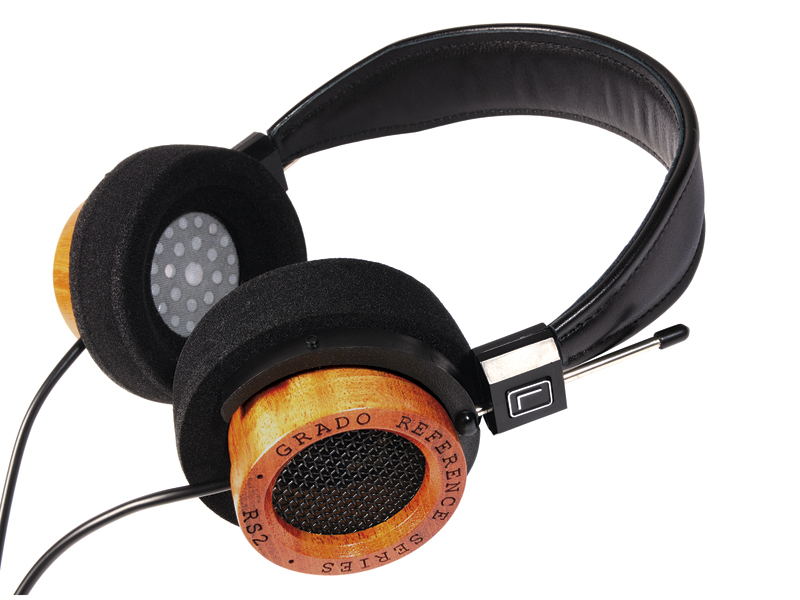TechRadar Verdict
A little treble boost seems to do no lasting harm and the rest of the frequency range is neutral and believable. Detail is very good and the overall impression is of lively, energetic and involving music-making
Pros
- +
Lively and engaging performance
- +
Strong detail
- +
Great build quality
Cons
- -
Some coloration, but it's not much of an issue
Why you can trust TechRadar
Grado remains a dedicated specialist company, making headphones, cartridges and a small range of related accessories, including a rather natty-looking headphone amplifier.
The Grado RS2 is typical of the range in looking somewhere between understated and seriously retro – at the very least we wouldn't want to accuse Grado of going overboard on the styling front. That said, the solid mahogany housing is not only practical, but good-looking.
Our main concern on the design and styling front is with the foam earcups, which are quite hard and rough and sit on the ears rather around them. The resulting pressure is not always comfortable and we would certainly recommend any intending purchaser to spend at least 15 minutes wearing the headphones.
High-end build
This model shares quite a lot of features with the next model up, the RS1, including 'Ultra-High Purity Long Crystal' copper in both the voice coils and the lead. As in most high-end headphones these days, the magnet in each drive unit is rare-earth type.
Grado makes much of the process it uses to relieve stress in the diaphragm before each driver is built into a finished headphone and claims that this reduces diaphragm breakup and resonance and, hence, distortion.
As an open-back design, the RS2 cuts out very little external noise, but at least it feels very unintrusive on the head. The fitted lead is very flexible and almost immune to friction noise.
Sign up for breaking news, reviews, opinion, top tech deals, and more.
Involving musical experience
This is certainly a musically involving headphone. The first impression it makes is of solid, lifelike musicians and instruments with plenty of body and presence. The sound is not completely free of coloration, but that any departure from neutrality is never obtrusive.
As we've come to expect from Grado models, detail is very good, at least most of the time. Just occasionally we experienced something in the way of a thickening-up of sound, an effect that seems to occur when the upper midrange is particularly busy.
Otherwise, though, there's a very high degree of insight into complex musical textures. We particularly enjoyed voices through these headphones, each one clearly characterised and (in cases where we've heard the original) very natural and recognisable.
Minor coloration
Interestingly, the slight coloration in this headphone has a tendency to make sounds seem to originate from nearer the listener than one is accustomed to – it's a little lift in the high treble and of course high treble does tend to drop off quite fast with distance.
Quite why it should be more noticeable here than with other headphones we can only guess, as it's a common enough characteristic. Sometimes we thought we detected a slight richness in the upper bass too, but if so it's minor and frankly, rather pleasant.
Diamond in the rough
These are certainly very even-handed headphones when it comes to different musical styles. Classical symphonies and string quartets are treated equally and will clearly suit listeners with broad tastes.
In fact the sound isn't ultra-civilised: there is just a trace of roughness which, if anything, rather compensates for the tendency headphones can easily have to sound too 'perfect'. In short, this is a well-rounded transducer with much to recommend it in many areas.
The price is on the high side, but we feel it can be justified, despite the rather basic look and feel.
